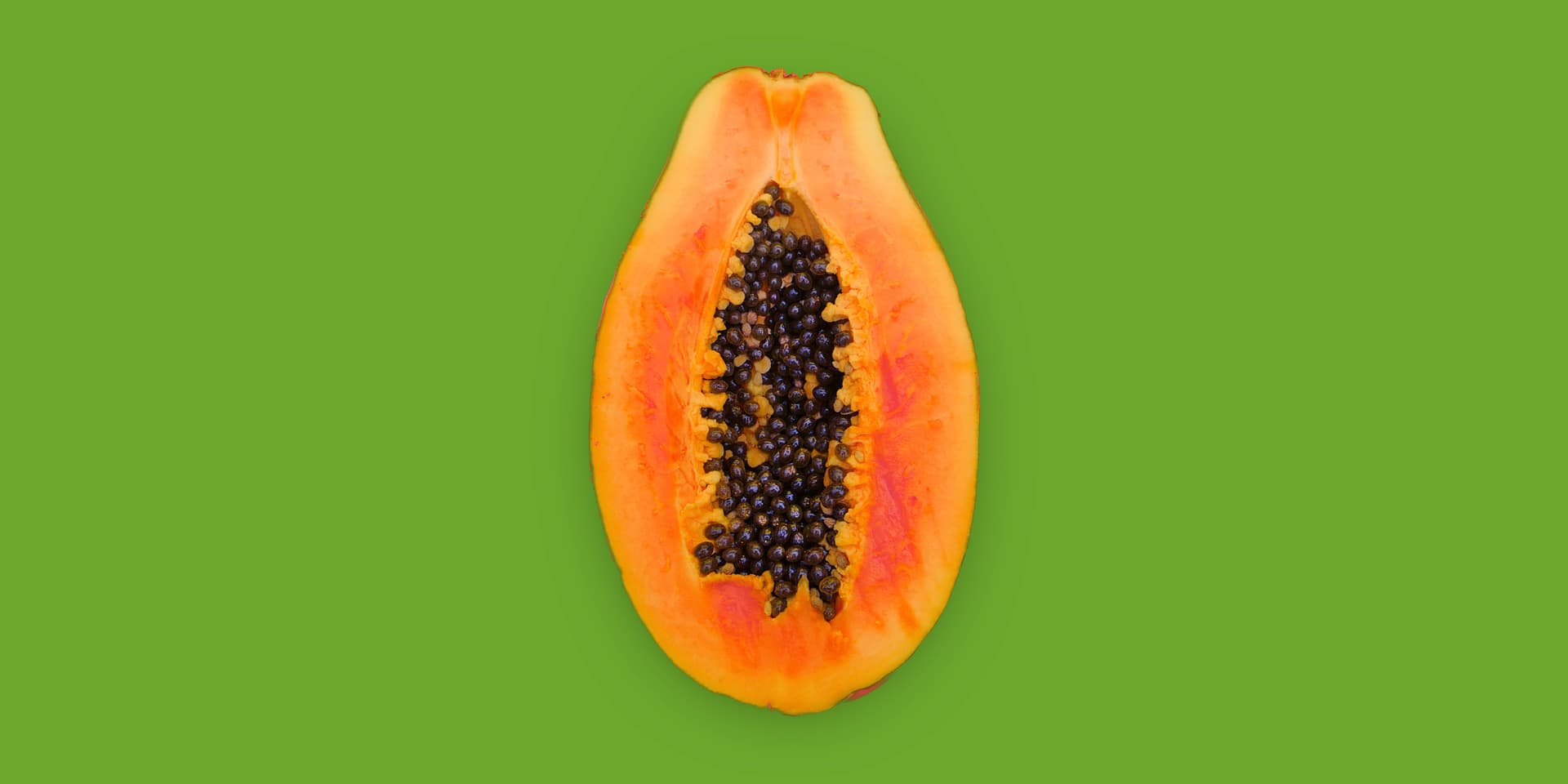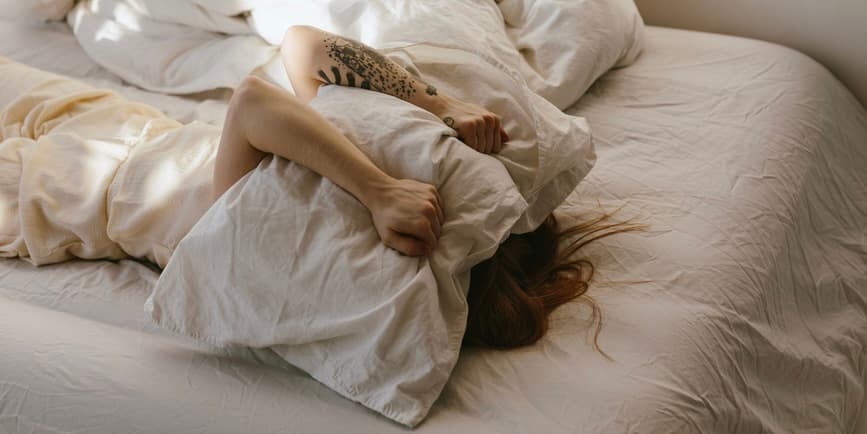
Yeast infection causes, symptoms and treatment

We get it. When you’ve got vaginal irritation and uncomfortable discharge, you don’t want to waste a minute in finding treatment. But is a yeast infection causing that itching, burning and odd type of discharge—or something else?
We’ve got everything you need to know about the causes, symptoms and vaginal yeast infection treatment options. Plus, info on how Dr. B can help you get an online yeast infection prescription treatment through our virtual health services.
What is a yeast infection?
A yeast infection is a common fungal infection that often affects the vagina. Also called candidiasis or candidal vaginitis, it can trigger symptoms like vaginal itching, irritation and a thick, white discharge.
According to CDC estimates, 75% of people with vaginas will experience at least one yeast infection throughout their lifetime. Up to 45% will experience two or more. They’re most common after puberty and before menopause—but anyone can experience a yeast infection.
Yeast infections can occur in other parts of the body. These include:
- On the skin
- In the mouth or on the tongue (called thrush)
- In the esophagus or intestines
- On the head or foreskin of the penis
What causes a yeast infection?
Yeast infections are caused by excessive growth of Candida—a common type of fungi found on the body. Research suggests that about 200 species of Candida exist. The only ones thought to cause infections are C. albicans, C. parapsilosis, C. glabrata, C. krusei. and C. tropicalis.
Most people have small amounts of Candida growing on their skin and inside parts of their body. These are mainly present in areas like the mouth, intestines or vagina. Candida doesn’t usually cause any symptoms. But when something disrupts the healthy balance of bacteria and yeast, it overgrows and causes a yeast infection.
Other Candida-related fungal infections include athlete's foot, jock itch, nail fungus and diaper rash. Invasive candidiasis is a more serious fungal infection that can become life-threatening if not managed properly.
Who is at high risk for a yeast infection?
Anyone can get a yeast infection, but some health-related risk factors can increase your risk. These include:
- Pregnancy: Hormonal shifts in the body during pregnancy can increase risk.
- Uncontrolled diabetes: High blood sugar levels can aid Candida yeast development.
- Birth control, antibiotics or steroids: Medications that weaken the immune system or kill certain bacteria can allow fungi to reproduce unchecked.
- Being immunocompromised: Immune disorders like HIV can reduce the body’s defenses against fungi and bacteria.
Certain lifestyle factors can also increase the risk of a yeast infection. These include:
- Using a vaginal deodorant or scented tampons
- Not changing a wet bathing suit
- Leaving on sweaty clothes
Are yeast infections contagious?
Yeast infections aren’t generally contagious. Candida can transfer to another person by touch. But that person is unlikely to develop a yeast infection unless they’re already susceptible to them. While not considered a sexually transmitted infection (STI), a yeast infection can spread through sexual activity.
What does a yeast infection look like?
Yeast infection symptoms can vary from person to person. But the most common symptoms include:
- An itchy vagina (including an itchy vulva and itchy vaginal lips)
- A burning sensation in the vaginal area
- Redness or swelling of the vagina or vulva
- A thick, white vaginal discharge (called leukorrhea)
Less common but serious symptoms include a vaginal rash, sores or blisters. If you experience these symptoms, seek medical attention. And if any symptoms don’t resolve in a few days, see a medical provider.
Is it a yeast infection or something else?
Vaginal yeast infections are common. But they share prevalent symptoms with other infections. So it can be frustratingly difficult to tell whether you’re experiencing a yeast infection—or something else.
Some conditions commonly confused with yeast infections include:
- Sexually transmitted infections: STIs like chlamydia, trichomoniasis and gonorrhea can cause itching, general irritation of the vaginal area and vaginal discharge.
- Bacterial vaginosis (BV): BV is caused by bacterial overgrowth. It also triggers vaginal discharge—but BV discharge includes a fishy vaginal odor. You can have BV and a yeast infection at the same time. Learn more here.
- Urinary tract infection (UTI): To spot signs of a UTI vs. yeast infection, look for lower abdomen pressure, smelly urine, painful urination or a constant need to pee. These are signs of a UTI. (Dr. B can help you treat UTI, too!)
- Allergies: Your vaginal area can be extremely sensitive to the products you use. Soap, detergent and hygiene products can all cause itching and pain.
If you’re having trouble determining which infection you have, talk with a licensed medical provider about your symptoms. If appropriate, they can help you find the best medication for a yeast infection to help clear those symptoms fast!
Can a yeast infection go away on its own?
A mild yeast infection may clear up on its own. But most require medical treatment. Without proper treatment, future yeast infections are more likely.
A yeast infection’s severity often depends on how quickly you seek treatment and how much the Candida yeast has multiplied. If you’re experiencing even mild vaginal itching, redness, vaginal discharge or pain during sex, seek advice from a medical provider. They can help you find the best suppository or pill for yeast infection.
How is a yeast infection diagnosed?
Here are some ways your provider may diagnose a vaginal yeast infection:
- Pelvic exam: Your provider will examine your external genital area and use a speculum to examine the vagina and cervix.
- Culture test: They may take a swab of your vaginal fluid and send it to a lab to determine if a fungus is causing the infection.
- Molecular test: A molecular test can detect small amounts of yeast in the urine.
Some at-home tests can diagnose a yeast infection. These tests don’t identify the type of fungus present. But they can determine typical versus abnormal pH levels in the vagina.
If you’re suffering from frequent yeast infections (more than four per year), it’s a good idea to talk with your medical provider about a possible underlying cause. They may recommend a blood sugar test for diabetes, a test for HIV or examine possible hormonal changes like pregnancy or birth control.
How to treat a yeast infection
Most yeast infections are easily treated with prescription medication. Effective yeast infection treatments are often applied as a topical cream or vaginal suppository or taken as an oral pill. Most yeast infections begin to clear after just a few days with medication. Complicated cases can take longer to treat.
Yeast infection treatments are classified as azole antifungal drugs. All essentially serve the same purpose—they restrict the growth of the Candida fungus to restore bacterial balance in the vagina.
Some common yeast infection medicines include:
- Butoconazole
- Clotrimazole
- Fluconazole and its brand name Diflucan
- Miconazole and its brand name Monistat
- Terconazole
Some yeast infection medications are available over-the-counter. But it’s recommended to seek a medical professional's opinion before selecting a treatment—especially for your first infection. Your medical provider may recommend varying treatments depending on the severity of your symptoms, the other medications you’re taking or your pre-existing medical conditions. Be sure to carefully follow prescribing instructions.
Yeast infection home remedies
A variety of home remedies may help relieve yeast infection symptoms. But the efficacy of these methods is primarily anecdotal, and they are not monitored for safety and efficacy by the Food and Drug Administration (FDA). So the best way to treat your yeast infection is with an approved medication prescribed under the advice of a medical provider.
If you do try a home remedy, only do so with medical supervision.
Common yeast infection home remedies include:
- Tea tree oil: This popular essential oil is thought to possess antifungal properties that help reduce Candida yeast levels. Tea tree oil is usually applied via a vaginal suppository. It’s highly potent, so only try this under medical supervision.
- Probiotic supplements: Probiotics can help prevent yeast infections by rebalancing bacteria. Look for products specially formulated for reproductive health.
- Greek yogurt: Greek yogurt is an excellent source of probiotics and can help diversify your gut microbiome. Make sure your yogurt contains live cultures.
- Boric acid: A natural compound of boron, oxygen and hydrogen, boric acid is thought to be an effective treatment option for those who don’t respond to standard antifungal treatments.
- Coconut oil: Coconut oil may work to restrict the growth of the Candida albicans yeast. Unlike many other home remedies, it’s safe to apply directly to the vaginal area.
Online treatment for yeast infections
If you’re struggling with symptoms of a yeast infection, don’t wait to seek out treatment. Get started with an assessment for yeast infection treatment online. We’ll connect you with a licensed medical provider who will review your health assessment and, if appropriate, recommend a prescription yeast infection treatment. Get back to a symptom-free life—all from the comfort of home!
Sources:
Centers for Disease Control and Prevention. (2013). Vulvovaginal Candidiasis (VVC).
Spampinato, C., et al. (2013). Candida infections, causes, targets, and resistance mechanisms: traditional and alternative antifungal agents. BioMed Research International.
Sign up for the free Dr. B newsletter for a weekly report on the latest in healthcare + research-based advice for staying healthy and mentally well.





